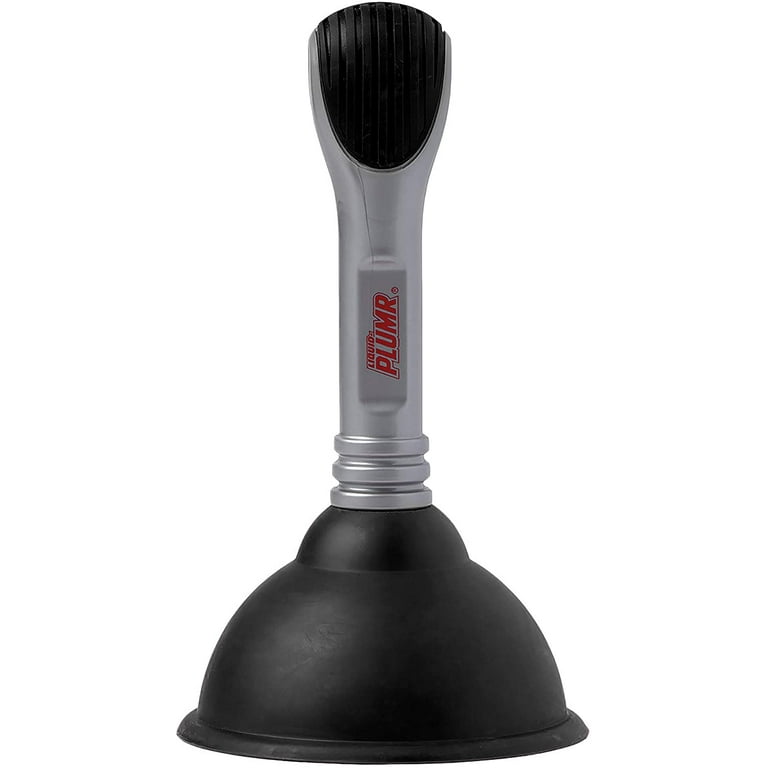What are your thoughts on A Guide to Plungers (and How to Use Them)?

Intro
Correct upkeep of home drains is crucial for stopping obstructions and guaranteeing smooth water flow. Among the key tools in every property owner's toolkit is the bettor, alongside various drainpipe cleaners created to take on persistent clogs effectively. This short article checks out exactly how to utilize plungers and drain cleaners effectively to maintain your drains pipes moving easily.
Section 1: Comprehending Bettors
Types of Plungers
There are several sorts of bettors offered, each developed for different sorts of drains pipes and blocks. The most usual types include mug plungers, flange bettors, and accordion plungers.
How Plungers Job
Plungers work with the principle of developing pressure and suction to displace blockages. When properly applied over a drain, they produce a vacuum cleaner that can pull out particles or break up obstructions.
Picking the Right Plunger
Choosing the appropriate plunger depends upon the sort of drainpipe and the nature of the clog. Cup bettors are ideal for sinks and tubs, while flange plungers are better matched for bathrooms as a result of their design.
Common Blunders with Plungers
Preventing these errors ensures reliable plunging: incorrect seal around the drain, not enough pressure, and not clearing surrounding debris.
Section 2: Using Plungers Efficiently
Preparation
Before diving, make certain the bettor covers the drainpipe completely and forms a limited seal. Clear any kind of visible debris around the drainpipe opening.
Method
Start with mild plunging movements to construct suction. Rise stress progressively, making use of a constant rhythm. Repeat as essential till the drainpipe removes.
Fixing Tips
If plunging doesn't function, attempt changing the seal, applying oil jelly for a far better seal, or utilizing a different type of bettor.
Section 3: Understanding Drainpipe Cleansers
Types of Drainpipe Cleansers
Drain cleaners can be chemical or enzymatic. Chemical cleaners use strong chemicals to liquify obstructions, while chemical cleansers utilize natural enzymes to break down organic matter.
How Drainpipe Cleaning Company Job
Chemical cleaners react with clogs to liquify them, while enzymatic cleansers break down organic materials like hair and grease without harming pipelines.
Safety Considerations
Always use gloves and eye defense when making use of chemical drainpipe cleaners. Ensure adequate air flow and adhere to maker directions thoroughly.
Eco-Friendly Alternatives
Consider making use of vinegar and cooking soda or enzyme-based cleansers for environment-friendly options that are more secure for pipes and the setting.
Section 4: Making Use Of Drain Cleaning Company Efficiently
Application Strategies
Pour chemical cleaners straight into the drain opening. Permit them to work for the suggested time before purging with hot water. Enzymatic cleansers must sit overnight.
Preventative measures
Prevent mixing various kinds of cleaners, as this can create harmful fumes. Never ever utilize chemical cleansers combined with a plunger, as spilling can occur.
Dealing With Stubborn Clogs
For persistent obstructions, take into consideration making use of a pipes snake or calling a professional plumber to stop damages to pipes.
Conclusion
Finally, recognizing exactly how to use bettors and drain cleansers successfully is crucial for maintaining healthy plumbing systems. By choosing the right devices and techniques, property owners can take on minor blockages and protect against significant pipes problems down the line.
How to Use a Plunger to Unclog a Drain
The humble plunger is a simple yet effective tool for breaking clogs in sinks, tubs and toilets. This handy tool is easy to use. You can make the most of its power if you understand how it works. Ready to dive in? Here’s what you need to know.
Safety First!
Never use a plunger with drain chemicals. Water will splash as you work, and the chemicals can spatter, burning skin and eyes. It’s a good idea to use rubber gloves and wear safety goggles when you work on a clog.
Choose the Right Tool for the Job
Plungers come in two different styles. Sinks, bathtubs and showers require a cup plunger. Like its name suggests, the rubber end is shaped like a cup. Use a flange plunger on toilets. These plungers have a rubber funnel extending from the cup. A plunger needs to be big enough to cover the drain.
Ready, Set, Plunge!
- Coat the rim: Coat the plunger rim with petroleum jelly. This helps make a better seal.
- Block outlets: Hold a wet rag over nearby outlets such as the overflow vent or the drain in a second sink.
- Release air: Insert the plunger at an angle into the water. Water will displace air in the cup. A water-filled cup is more forceful than one filled with air.
- Keep the plunger upright: Hold the plunger perpendicular to the drain. Use fast, forceful strokes, but make the first stroke gentle. The first stroke can create a splash if the cup still contains air. Thrust the plunger 15 to 20 times.
- Snap off the plunger: The final stroke should be a strong upward motion that ends when the plunger snaps off the drain.
- Repeat the process: you may need to repeat this sequence several times. When the water drains away, your work is done. High-five!
https://plumbernw.com/blog/how-to-use-a-plunger-to-unclog-a-drain/

I'm certainly very curious about and I really hope you enjoyed reading my blog post. For those who enjoyed our article kindly consider to share it. Many thanks for your time. Kindly stop by our site back soon.
Schedule Service Pickup
Comments on “How to Effectively Use Plungers and Drain Cleaners: Expert Insights”